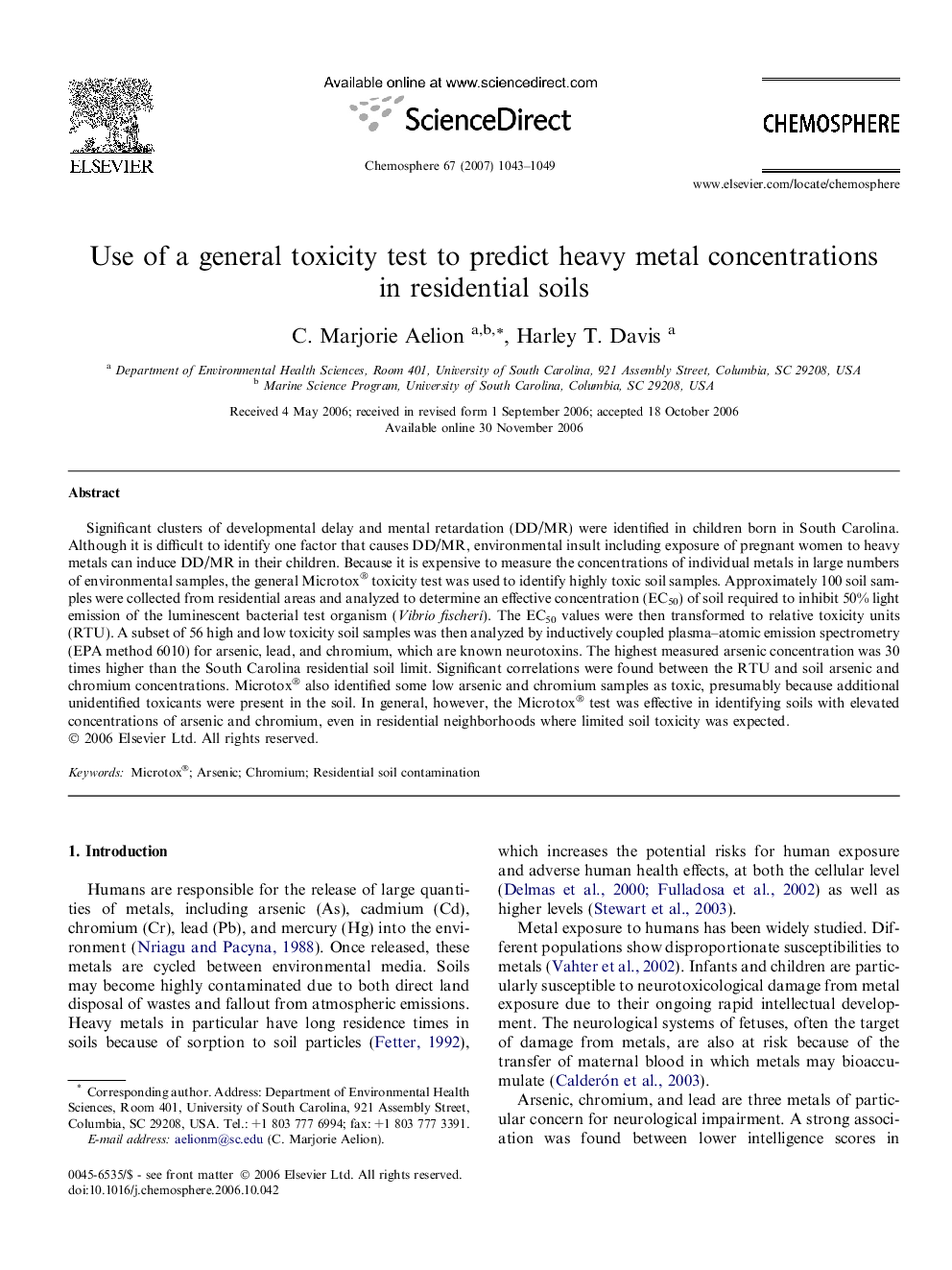| کد مقاله | کد نشریه | سال انتشار | مقاله انگلیسی | نسخه تمام متن |
|---|---|---|---|---|
| 4415543 | 1307750 | 2007 | 7 صفحه PDF | دانلود رایگان |

Significant clusters of developmental delay and mental retardation (DD/MR) were identified in children born in South Carolina. Although it is difficult to identify one factor that causes DD/MR, environmental insult including exposure of pregnant women to heavy metals can induce DD/MR in their children. Because it is expensive to measure the concentrations of individual metals in large numbers of environmental samples, the general Microtox® toxicity test was used to identify highly toxic soil samples. Approximately 100 soil samples were collected from residential areas and analyzed to determine an effective concentration (EC50) of soil required to inhibit 50% light emission of the luminescent bacterial test organism (Vibrio fischeri). The EC50 values were then transformed to relative toxicity units (RTU). A subset of 56 high and low toxicity soil samples was then analyzed by inductively coupled plasma–atomic emission spectrometry (EPA method 6010) for arsenic, lead, and chromium, which are known neurotoxins. The highest measured arsenic concentration was 30 times higher than the South Carolina residential soil limit. Significant correlations were found between the RTU and soil arsenic and chromium concentrations. Microtox® also identified some low arsenic and chromium samples as toxic, presumably because additional unidentified toxicants were present in the soil. In general, however, the Microtox® test was effective in identifying soils with elevated concentrations of arsenic and chromium, even in residential neighborhoods where limited soil toxicity was expected.
Journal: Chemosphere - Volume 67, Issue 5, March 2007, Pages 1043–1049